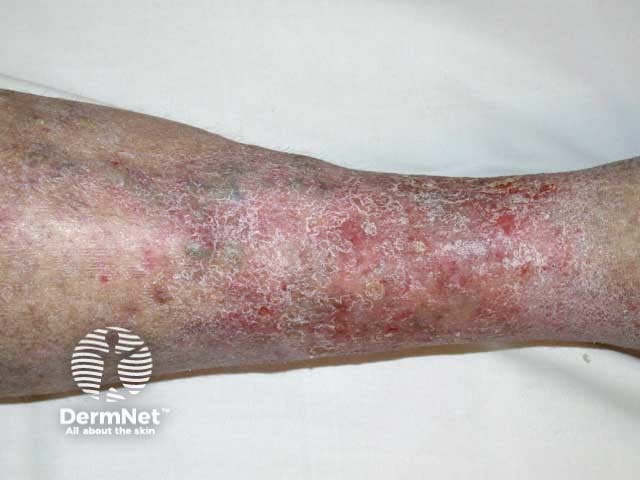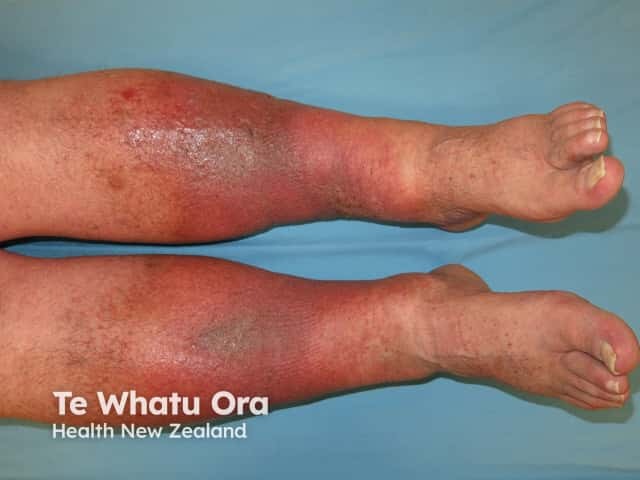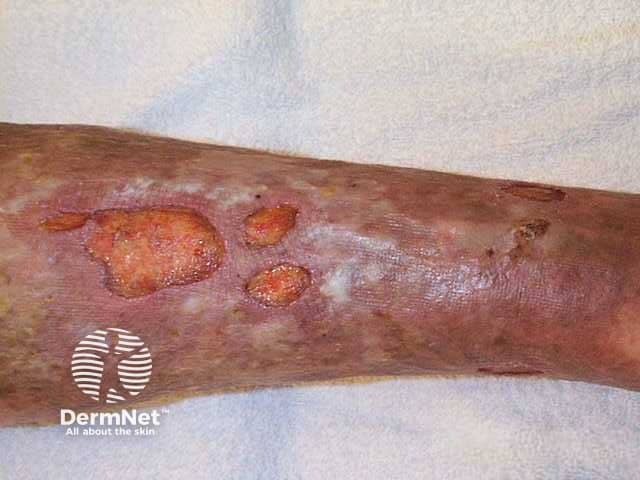Main menu
Common skin conditions

NEWS
Join DermNet PRO
Read more
Quick links
Author: A/Prof Amanda Oakley, Dermatologist, Hamilton, New Zealand, 1997. Updated January 2016.
Introduction
Demographics
Causes
Clinical features
Complications
Diagnosis
Treatment
Prevention
Outlook
Venous eczema is a common form of eczema/dermatitis that affects one or both lower legs in association with venous insufficiency. It is also called gravitational dermatitis.
Venous eczema is most often seen in middle-aged and older patients — it is reported to affect 20% of those over 70 years. It is associated with:
Venous eczema appears to be due to fluid collecting in the tissues and activation of the innate immune response.
Normally during walking the leg muscles pump blood upwards and valves in the veins prevent pooling. A clot in the deep leg veins (deep venous thrombosis or DVT) or varicose veins may damage the valves. As a result back pressure develops and fluid collects in the tissues. An inflammatory reaction occurs.
Venous eczema can form discrete patches or become confluent and circumferential. Features include:

Venous eczema

Lipodermatosclerosis

Venous ulcer
The diagnosis of venous eczema is clinical.
Patch tests may be undertaken if there is suspicion of contact allergy.
Venous eczema cannot be completely prevented but the number and severity of flare-ups can be reduced by the following measures.
Venous eczema tends to be a recurring or chronic disorder lifelong. Treat recurrence promptly with topical steroids.